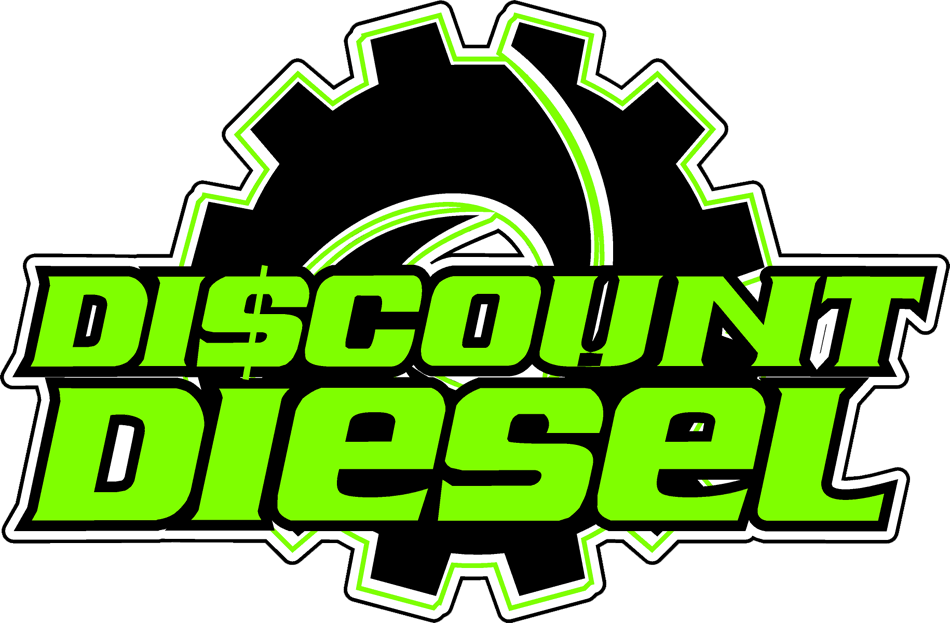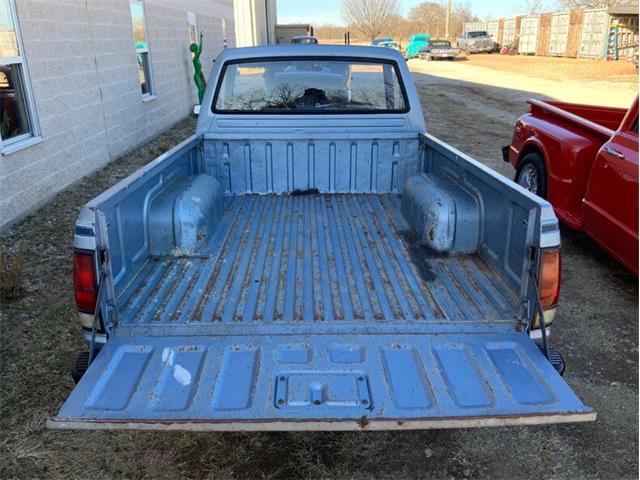Welcome to our expert guide on how to fix a rusted truck bed. Whether you’re a seasoned truck owner or a novice, dealing with rust can be a frustrating and costly endeavour. That’s why we, at Discount Diesel Truck Repair Shop, have compiled this comprehensive guide to help you tackle the issue with confidence.
We aim to provide you with the knowledge and tools necessary to liberate your truck bed from the clutches of rust and restore it to its former glory. From assessing the severity of rust damage to step-by-step repair instructions, we’ve got you covered.
So, let’s dive in and learn how to fix a rusted truck bed like a true professional.
Key Takeaways
- Exposure to moisture, road salt, and chemicals, as well as scratches and paint damage, are common causes of rust on truck beds.
- Signs of rust on a truck bed include bubbling or blistering paint, flaking metal, discolouration, rust around areas where the bed connects to the frame and supports, and areas where rust has eaten away at the metal.
- To fix minor surface rust on a truck bed, the rusty area should be thoroughly cleaned, rust and loose paint should be eliminated using a rust converter or remover, the surface should be sanded and smoothed, and primer and paint should be applied for protection.
- Welding is the preferred method for repairing extensive rust damage on a truck bed, as it involves joining metal pieces together, creating a strong bond, and grinding down excess material for a seamless finish. Regular cleaning and maintenance, as well as applying protective coatings and avoiding scratches and paint damage, can help prevent future rust issues on a truck bed.
What Causes Rust on Truck Beds?
Rust on truck beds is primarily caused by exposure to moisture and water, as well as road salt and chemicals used for de-icing. Additionally, scratches and paint damage can expose the metal to the elements, accelerating the rusting process.
Another contributing factor is the lack of protective coatings, which can provide a barrier against moisture and prevent rust formation.
Exposure to Moisture and Water
Truck beds are susceptible to rust due to prolonged exposure to moisture and water. This is a common issue faced by truck owners, especially those who use their trucks for commercial purposes.
When a truck bed is constantly exposed to moisture, such as rain or snow, it creates the perfect environment for rust to develop. The moisture seeps into the metal surface of the truck bed, causing it to oxidize and corrode over time. This can lead to significant damage if not addressed promptly. To prevent rust from forming, it is essential to take proactive measures such as regular cleaning and applying protective coatings.
If rust does develop, it is recommended to seek professional assistance from a trusted truck repair shop that specializes in commercial truck and trailer repair. They have the expertise and tools to effectively remove rust and restore the truck bed’s integrity.
Road Salt and Chemicals
Prolonged exposure to road salt and various chemicals accelerates the corrosion process on truck beds, necessitating preventative measures for truck owners. Road salt, commonly used to de-ice roads during winter months, contains chloride, which is highly corrosive to metal surfaces. When trucks come into contact with road salt, it can penetrate the protective coating on the truck bed and initiate the rusting process.
Additionally, various chemicals, such as those used in industrial environments or agricultural applications, can also contribute to the corrosion of truck beds. These chemicals can react with the metal surface, leading to the formation of rust.
To combat this issue, truck owners should regularly wash their trucks, especially during winter, to remove any salt or chemicals. Applying a protective coating or rust inhibitor on the truck bed can also provide an additional layer of defence against corrosion.
Scratches and Paint Damage
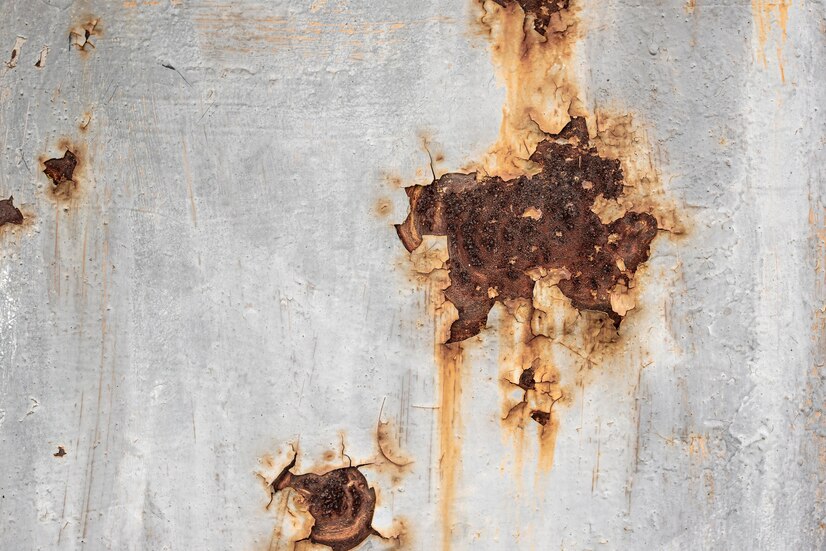
The presence of scratches and paint damage on truck beds can contribute to the formation of rust. When the protective layer of paint is compromised, the metal underneath becomes exposed to moisture and air, leading to corrosion. Truck owners need to understand what causes these scratches and paint damage to prevent rust from developing on their truck beds.
| Causes of Scratches and Paint Damage |
|---|
| Road debris |
| Improper loading and unloading |
| Collision with other objects |
| Exposure to harsh weather conditions |
Road debris, such as rocks and gravel, can cause scratches and chips in the paint when they hit the truck bed while driving. Improper loading and unloading of cargo can also lead to scratches and dents. Collisions with other objects, whether it be from accidents or minor mishaps, can result in paint damage as well. Additionally, exposure to harsh weather conditions like rain, snow, and UV rays can gradually wear down the paint and create opportunities for rust to form.
To prevent rust caused by scratches and paint damage, truck owners should consider applying a protective coating or bed liner to their truck beds. Regular inspections and prompt repair of any scratches or paint damage can also help maintain the integrity of the protective layer. By taking these preventive measures, truck owners can ensure their truck beds remain rust-free and in optimal condition.
Lack of Protective Coatings
To further address the issue of rust formation on truck beds, one significant factor that contributes to this problem is the lack of protective coatings. Without proper protective coatings, truck beds are left vulnerable to the elements, including moisture, salt, and other corrosive substances.
These elements can penetrate the metal surface, leading to the formation of rust over time. The lack of protective coatings means that the truck bed is not shielded from these harmful factors, increasing the chances of rust formation and corrosion.
Protective coatings act as a barrier between the metal surface of the truck bed and the external environment. They provide a layer of protection that prevents moisture and corrosive substances from coming into direct contact with the metal.
By applying a protective coating, truck owners can significantly reduce the risk of rust formation and extend the lifespan of their truck beds.
How Can You Assess the Severity of Rust on a Truck Bed?
When assessing the severity of rust on a truck bed, a visual inspection of the rust damage is crucial. This involves looking for areas of flaking, bubbling, or discolouration. Additionally, it is essential to check for any signs of structural integrity compromise, such as weakened or corroded areas.
Visual Inspection of the Rust Damage
Perform a thorough visual inspection to accurately determine the severity of rust damage on a truck bed. Visual inspection is an essential step in assessing the extent of rust on a truck bed and determining the appropriate repair measures.
Begin by examining the surface of the bed for any visible signs of rust, such as discolouration, bubbling, or flaking paint. Pay close attention to areas prone to rust, such as the wheel wells, edges, and seams. Use a flashlight to inspect hard-to-reach areas and look for any signs of corrosion or rust penetration.
Take note of the size, depth, and location of the rust spots to evaluate the overall severity of the damage. By conducting a comprehensive visual inspection, you can accurately assess the rust damage and make informed decisions about the necessary repairs to restore the truck bed’s integrity and appearance.
Checking for Structural Integrity
To accurately assess the severity of rust on a truck bed and determine its structural integrity, a comprehensive evaluation of the surface and underlying components is crucial. Checking for structural integrity involves examining the extent of rust damage, particularly in areas that bear weight or support the truck bed.
Start by inspecting the overall condition of the truck bed, paying close attention to any visible signs of rust, such as flaking, bubbling, or discolouration. Next, assess the integrity of the bed by probing areas with a screwdriver or similar tool to determine if any soft spots or weak points exist.
Additionally, inspect the bed’s support components, such as the crossmembers, mounting brackets, and frame attachments, as these can also be affected by rust.
Determining the Extent of Surface and Structural Rust
By conducting a thorough evaluation of the truck bed’s surface and underlying components, you can accurately assess the severity of rust and determine its impact on the structural integrity.
When determining the extent of surface and structural rust on a truck bed, it is essential to inspect the entire surface for signs of corrosion. Look for bubbling or blistering paint, flaking metal, and discoloration, as these are clear indications of rust.
Additionally, closely examine areas where the bed connects to the frame and supports, as these are common areas for rust to develop. A gentle tapping with a screwdriver can help identify areas where the rust has eaten away at the metal.
What Tools and Materials Do You Need to Fix a Rusted Truck Bed?
To effectively repair a rusted truck bed, it is vital to have the appropriate tools and materials at your disposal. To begin with, you will need safety equipment such as gloves, goggles, and a respirator to protect yourself from harmful fumes and particles.
Additionally, you will require a wire brush or sandpaper to remove the rust and prepare the surface for repair. A rust converter or rust remover can be used to treat the affected area and prevent further corrosion. Once the rust has been addressed, a primer and paint specifically designed for metal surfaces should be applied to protect the truck bed from future rusting.
Finally, you will need basic tools like a wrench, pliers, and a socket set to remove any loose or damaged parts during the repair process.
How to Fix Minor Surface Rust on a Truck Bed?
To fix minor surface rust on a truck bed, there are several steps you can follow.
First, clean the rusty area thoroughly to remove any dirt or debris. Then, use a rust converter or remover to eliminate the rust and any loose paint. After that, sand and smooth the surface.
Cleaning the Rusty Area
To address minor surface rust on a truck bed, begin by thoroughly cleaning the affected area. This step is crucial as it removes any dirt, grime, or debris that might be present on the surface. Liberating your truck bed from these impurities allows for a better assessment of the rust damage and prevents further corrosion.
Start by washing the rusty area with a mild detergent and water solution. Gently scrub the surface using a soft brush or sponge. Rinse thoroughly and ensure all soap residue is removed.
Next, use a rust remover or a mixture of vinegar and baking soda to treat the affected area. Apply the solution and let it sit for a few minutes before scrubbing again. Rinse thoroughly and dry the surface completely.
Removing Loose Rust and Paint
To effectively address minor surface rust on a truck bed, the first step is to remove any loose rust and paint from the affected area using a wire brush or sandpaper. This process is crucial as it prepares the surface for further repair and prevents the rust from spreading.
Liberating your truck bed from loose rust and paint involves using a wire brush or sandpaper to scrub away the damaged layers. The wire brush can be used to remove loose rust and paint by vigorously scrubbing the affected area. Sandpaper can also be effective in smoothing the surface and removing any remaining rust particles.
It is important to ensure that all loose rust and paint are completely removed before moving on to the next step of the repair process.
Applying Rust Converter or Remover
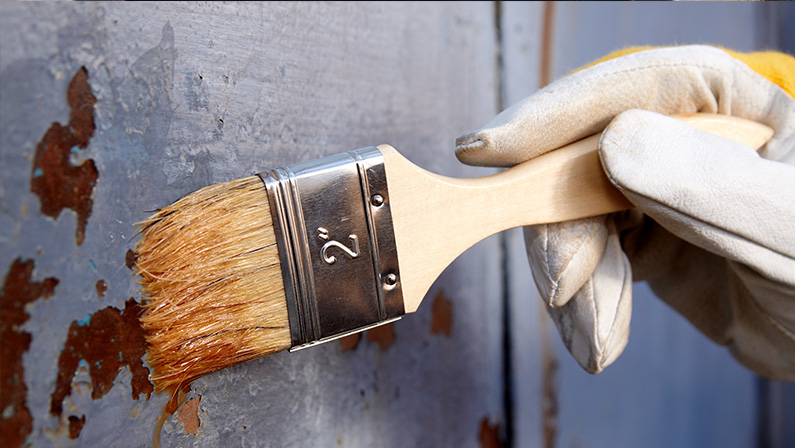
To properly address minor surface rust on a truck bed, the next step after removing loose rust and paint is to apply a rust converter or remover. Rust converters are chemical solutions that react with rust, transforming it into a stable compound that can be painted over. They contain tannic acid or phosphoric acid, which converts iron oxide (rust) into iron tannate or iron phosphate, respectively. On the other hand, rust removers work by dissolving rust chemically, leaving behind a clean metal surface.
They typically contain acidic compounds such as hydrochloric acid or oxalic acid. Both rust converters and removers are effective in treating minor surface rust and preparing the truck bed for further restoration. However, it is important to follow the manufacturer’s instructions carefully and wear appropriate protective gear when using these products.
| Rust Converter | Rust Remover |
|---|---|
| Transforms rust into a stable compound | Dissolves rust chemically |
| Contains tannic or phosphoric acid | Contains hydrochloric or oxalic acid |
| Prepares the surface for painting | Leaves a clean metal surface |
Sanding and Smoothing the Surface
Sanding and smoothing the surface is a crucial step in fixing minor surface rust on a truck bed. This process helps to remove any loose rust particles and create a smooth, even surface for the next steps in the repair process.
To begin, gather the necessary tools such as sandpaper, a sanding block, and a dust mask to protect yourself from any harmful particles. Start by gently sanding the rusted areas using a back-and-forth motion, focusing on removing the rust and smoothing the surface. Be sure to apply even pressure and avoid sanding too aggressively, as this can damage the metal.
Once the surface is smooth and free of rust, wipe it clean and proceed with the next steps of the repair process.
Applying Primer and Paint for Protection
For optimal protection against further rusting, the next step in fixing minor surface rust on a truck bed involves applying primer and paint. Once the surface has been sanded and smoothed, it is crucial to create a barrier that prevents moisture and corrosion from damaging the metal.
Primer acts as a protective layer, ensuring that the paint adheres properly and provides long-lasting defence against rust. When choosing a primer, opt for one specifically designed for metal surfaces and rust prevention. Apply the primer evenly, using a brush or spray gun, and allow it to dry completely before proceeding with the paint.
The final step is to apply a high-quality paint that is resistant to corrosion and provides a durable finish. This combination of primer and paint will not only restore the appearance of the truck bed but also safeguard it against future rusting, ensuring its longevity and value.
What Steps Are Involved in Repairing Extensive Rust Damage on a Truck Bed?
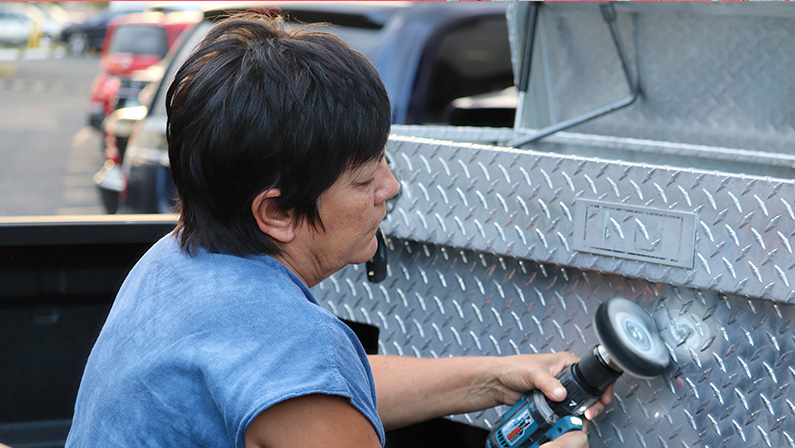
Repairing extensive rust damage on a truck bed involves a series of crucial steps. The first step is to remove the damaged sections or panels, followed by welding or patching any holes and weak areas.
Next, the remaining rust needs to be treated and the surface prepared before applying protective coatings and paint to ensure long-lasting durability.
Removing Damaged Sections or Panels
To effectively address extensive rust damage on a truck bed, it is imperative to remove the damaged sections or panels using specialized techniques. This process is crucial as it allows for a thorough inspection of the extent of the damage and ensures a proper repair.
The first step is to assess the affected areas and determine the scope of the rust damage. Once identified, the damaged sections or panels need to be carefully removed using precision tools and equipment. It is important to exercise caution during this process to avoid further damage to the truck bed.
Once the damaged sections are removed, the underlying structure can be evaluated and repaired accordingly. This step is critical in ensuring the longevity and durability of the truck bed.
Welding or Patching Holes and Weak Areas
After removing the damaged sections or panels, the next step in repairing extensive rust damage on a truck bed involves welding or patching holes and weak areas. This step is crucial in ensuring the structural integrity of the truck bed and preventing further rusting.
To begin, the technician will thoroughly clean the affected areas, removing any loose rust or debris. Next, they will assess the extent of the damage and determine whether welding or patching is the best solution. If the damage is minor, patching can be done using a suitable filler material and adhesive. However, for more severe damage, welding is the preferred method.
During the welding process, the technician will use specialized equipment to join the metal pieces together, creating a strong bond. This will reinforce the weakened areas and prevent future rusting. Once the welding is complete, any excess material will be ground down and smoothed out to ensure a seamless finish.
Treating the Remaining Rust and Surface Preparation
Continuing the repair process, the next step involves addressing the remaining rust and preparing the surface for further treatment on the truck bed. Treating the remaining rust is essential to prevent further corrosion and ensure a long-lasting repair. Here are the steps involved in repairing extensive rust damage on a truck bed:
| Step | Description |
|---|---|
| 1 | Remove loose rust and debris using a wire brush or sandpaper. |
| 2 | Apply a rust converter to transform any remaining rust into a stable surface. |
| 3 | Use a rust-inhibiting primer to prevent future rust formation. |
Once the rust is treated, the surface needs to be properly prepared for further treatment. This involves cleaning the area thoroughly and removing any contaminants such as dirt, grease, or old paint. Using a degreaser and a high-pressure washer can help achieve a clean surface. Finally, sanding the surface with fine-grit sandpaper creates a smooth and even base for the next steps in the repair process.
Applying Protective Coatings and Paint
Once the rust has been treated and the surface properly prepared, it is important to apply protective coatings and paint to repair extensive rust damage on a truck bed. This step is crucial in preventing further corrosion and ensuring the longevity of the truck bed.
To begin, a high-quality primer should be applied to create a strong bond between the surface and the paint. Next, a protective coating, such as an epoxy or polyurethane coating, should be applied to provide an additional layer of defence against rust and damage.
Finally, a durable paint specifically designed for automotive applications should be used to finish the repair. This paint should be resistant to UV rays, chemicals, and abrasions to ensure long-lasting protection.
Can You DIY, or Should You Seek Professional Help for Rust Repairs?
Seeking professional assistance for rust repairs is recommended to ensure a thorough and effective restoration of your truck bed.
While DIY projects can be empowering and cost-effective, tackling rust repairs on your own may not yield the desired results. Rust can be a complex issue, involving not only surface damage but also underlying structural integrity concerns.
Professionals have the knowledge, experience, and specialized tools to properly assess and address the extent of rust damage. They can provide expert advice on the most suitable repair methods, whether it involves patching, welding, or replacing parts.
Moreover, professional rust repairs often come with warranties, giving you peace of mind in knowing that the job has been done correctly.
How to Prevent Future Rust Issues on a Truck Bed?
To prevent future rust issues on a truck bed, there are several important steps to follow. Regular cleaning and maintenance, including removing dirt and debris, can help prevent the accumulation of moisture that leads to rust. Applying protective coatings, such as a bed liner or rust-resistant paint, can provide an additional layer of defence against rust.
It is also crucial to avoid scratches and paint damage, as these can expose the metal surface to moisture and accelerate rust formation. Additionally, considering rust-proofing treatments can further enhance the longevity and durability of the truck bed.
Regular Cleaning and Maintenance
Regularly maintaining and cleaning your truck bed is crucial to prevent future rust issues. Keeping your truck bed clean and free from debris and moisture will help to prevent the formation of rust. Start by regularly washing your truck bed with a mild soap and water solution, making sure to remove any dirt or grime that may have accumulated.
After washing, thoroughly dry the truck bed to prevent any moisture from sitting and causing rust. Additionally, consider applying a protective coating or sealant to the truck bed to create a barrier against moisture and corrosion.
Inspect your truck bed regularly for any signs of rust or damage, and address any issues immediately to prevent further deterioration. By implementing these regular cleaning and maintenance practices, you can extend the lifespan of your truck bed and keep rust at bay.
Apply Protective Coatings
To effectively prevent future rust issues on a truck bed, it is essential to apply protective coatings that create a barrier against moisture and corrosion. These coatings act as a shield, protecting the metal surface from the harmful effects of water, salt, and other corrosive substances.
By applying a high-quality protective coating, you can significantly extend the lifespan of your truck bed and save yourself from expensive repairs down the line. There are various types of protective coatings available, such as paint, sealants, and specialized rust inhibitors. It is important to choose a coating that is specifically designed for truck beds and offers long-lasting protection.
Regularly inspecting the coating for any signs of wear or damage and promptly addressing them will ensure that your truck bed remains rust-free and in optimal condition for years to come.
Avoid Scratches and Paint Damage
To prevent future rust issues on a truck bed, it is crucial to take preventative measures against scratches and paint damage. Scratches and paint damage not only mar the aesthetic appearance of the truck bed but also create opportunities for rust to develop and spread.
Liberating yourself from future rust problems requires a proactive approach. First, consider investing in a high-quality bed liner to protect the truck bed from scratches caused by cargo or tools. Additionally, use caution when loading and unloading items to avoid accidental scrapes.
Regularly inspect the truck bed for any signs of paint damage or exposed metal, and promptly address any issues by applying touch-up paint or protective coatings.
Rust-Proofing Treatments
Implementing rust-proofing treatments is essential for preventing future rust issues on a truck bed. Rust is a common problem that affects the durability and appearance of truck beds, leading to expensive repairs and decreased resale value. To liberate your truck bed from the shackles of rust, there are several effective treatments available.
One option is applying a corrosion-resistant paint or coating, which creates a protective barrier against moisture and other corrosive elements. Another method is using rust inhibitors, such as penetrating oils or waxes, which penetrate the metal and displace moisture to prevent rust formation.
Additionally, regular cleaning and waxing can help remove contaminants and maintain the integrity of the truck bed’s surface.
Are There Alternative Solutions for Severely Rusted Truck Beds?
One alternative solution for severely rusted truck beds is the application of a protective coating. This method involves applying a specialized coating to the surface of the truck bed to prevent further rusting and corrosion. The protective coating acts as a barrier between the metal and the elements, shielding it from moisture, dirt, and other corrosive substances.
This can help to extend the lifespan of the truck bed and prevent further deterioration. Additionally, the protective coating can also enhance the appearance of the truck bed, giving it a sleek and polished look.
It is important to note that while a protective coating can provide temporary relief for severely rusted truck beds, it is not a permanent solution. In cases of severe rust, it is recommended to consult with a professional for a more comprehensive repair or replacement.
A Truck Bed Built to Last a Lifetime
When considering a truck bed built to last a lifetime, it is essential to explore durable materials and advanced construction techniques. For those seeking liberation from the constant worry of rust and wear, investing in a truck bed made from high-quality materials such as stainless steel or aluminium is crucial.
These materials offer exceptional resistance to corrosion and can withstand the harshest conditions, ensuring longevity and durability. Additionally, advanced construction techniques, such as seamless welding and reinforced joints, further enhance the strength and lifespan of the truck bed.
Frequently Asked Questions
Can I Use Household Items to Fix Minor Surface Rust on a Truck Bed?
While it is possible to use household items to address minor surface rust on a truck bed, it is recommended to consult with a professional at a discount diesel truck repair shop for the most effective and long-lasting solution.
Are There Any Temporary Solutions to Prevent Further Rust Damage on a Truck Bed?
There are temporary solutions available to prevent further rust damage on a truck bed. These solutions include applying rust inhibitors or protective coatings, regularly cleaning and drying the bed, and keeping it covered when not in use.
How Long Does It Typically Take to Repair Extensive Rust Damage on a Truck Bed?
Repairing extensive rust damage on a truck bed can be a time-consuming process, typically taking several days to complete. Factors such as the severity of the damage and the availability of replacement parts can affect the timeline.
Is It Possible to Fix a Severely Rusted Truck Bed Without Replacing It?
Yes, it is possible to fix a severely rusted truck bed without replacing it. Various methods, such as sanding, patching, and applying rust converters, can be used to repair the rusted areas and restore the functionality of the bed.
Are There Any Specialized Tools Required to Fix Rust on a Truck Bed?
Specialized tools may be necessary to fix rust on a truck bed, depending on the severity of the damage. For example, a wire brush and rust converter can be used to remove rust and prevent further corrosion.
Conclusion
In conclusion, fixing a rusted truck bed requires assessing the severity of the rust and using the appropriate tools and materials. Minor surface rust can be fixed with sanding and painting, while extensive rust damage may require more extensive repairs.
It is important to properly maintain and prevent future rust issues to prolong the lifespan of the truck bed. Seeking professional help may be necessary for complex repairs. Consider alternative solutions for severely rusted truck beds.
